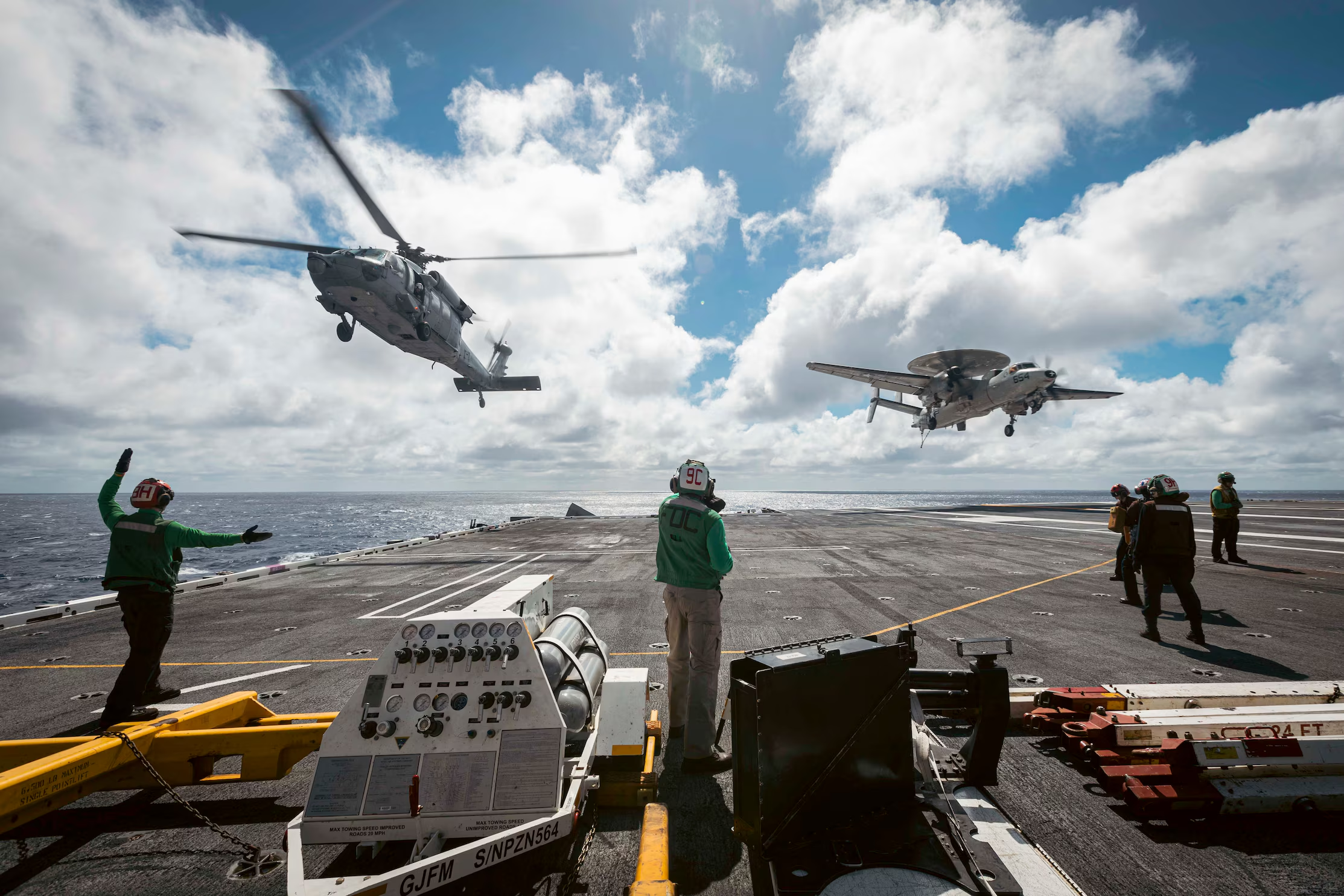
by Kris Osborn, President, Warrior
The USS Abraham Lincoln Carrier Strike Group has been ordered to remain in the Mediterranean Sea in response to war in the Middle East, a move which ensures massive combat power projection will remain within striking distance of Lebanon and Iran should that become necessary. The move is by no means surprising, yet these maritime maneuvers are further fortified by additional Naval positioning which appears to further prepare and ensure readiness in the event of further escalation.
The USS Ford carrier, for example, is among the group of Navy warships which has participated in a training "response" plan in both the Atlantic Ocean and Mediterranean Sea. The USS Ford recently patrolled key parts of the Atlantic with a Japanese Self Defense Forces destroyer, something potentially designed to demonstrate the growing global reach of US partnerships. Most recently, the USS Ford has been conducting critical "qualifications" with its weapons systems and Carrier Air Wing, including MH-60S Sea Hawk helicopters and E-2D Hawkeye surveillance planes.

Gerald R. Ford was underway in the Atlantic Ocean to further develop core unit capabilities during its basic phase of the optimized fleet response plan (U.S. Navy photo by Mass Communication Specialist 2nd Class Maxwell Orlosky)
Participating in what the US Navy calls a "fleet response plan" does not immediately suggest the Ford will be entering combat, yet the Carrier's recent activities in the Atlantic could be forward-placed in the Mediterranean Sea.
This is extremely critical, in terms of just pure contingency, given the tactical and geographic circumstances in the Central Command area of responsibility. Should the US Navy need to join or support Israeli combat operations in the region, ocean-launched attack power would doubtless prove critical. There are few locations in the Middle East where mechanized armored land units could quickly and efficiently mass and "stage" for deployment in any possible engagement with Hezbollah or Iran, yet Carrier-launched fighter jets and surveillance platforms operating in the Mediterranean Sea off the Israeli coast could operate with great impact throughout the entire region. Carrier-launched F-35Cs, for instance, could reach Iranian airspace from the Mediterranean and certainly operate at will above Lebanon in the event of a wider war.
The US Navy has also conducted dual-carrier war exercises in the Pacific, something intended to prepare for a potential engagement with China, yet the interoperability training, networking and cyclical sortie-generation could prove relevant in the Mediterranean as well. While the US Navy is unlikely to find itself immersed in a massive, full-scale war in the Middle East, the Pentagon appears to be preparing for a wide range of contingencies.

